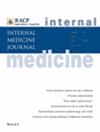Enhancing utilisation of Hospital in the Home for intravenous diuretic therapy: a retrospective study of barriers and estimated bed substitution in general medicine inpatients with decompensated heart failure
Abstract
Background
Ambulatory treatment of decompensated heart failure (HF) with intravenous (IV) furosemide through Hospital in the Home (HITH) is safe, effective and reduces costs.
Aims
We hypothesised that this service was underutilised by general medicine and aimed to examine potential barriers and bed-day utilisation implications.
Methods
In this multi-site, retrospective observational study, we identified general medicine inpatients admitted with heart failure (HF) between November 2021 and October 2022. Those who required intravenous (IV) furosemide for >24 h were selected and included if clinically stable. Patients were grouped by ‘no barriers’, ‘relative barriers’ and ‘absolute barriers’ to Hospital in the Home (HITH). We estimated potential brick-and-mortar hospital bed-days that could be transferred to HITH.
Results
Of 1856 admissions coded as HF, 694 met our criteria. Of these, 311 (45%) were clinically stable, while only four were transferred to HITH. Of the remaining 307 patients, 27 (9%), 129 (42%) and 151 (49%) exhibited no, relative and absolute barriers to HITH respectively. Those with no or relative barriers (n = 156, 51% or 22% of those treated with IV furosemide) had two (interquartile range (IQR) 1–3) additional medical diagnoses and spent 4 (IQR 3–6) days in hospital while clinically stable. A 36% reduction in brick-and-mortar hospital bed-day utilisation by transferring care to HITH was estimated.
Conclusion
In our health service, general medicine patients are rarely referred to HITH for IV diuresis for decompensated HF. Overcoming barriers relating to the ability of the model of care to support greater acute medical complexity could result in increased utilisation of HITH and deliver a significant reduction in brick-and-mortar hospital bed-day utilisation.


 求助内容:
求助内容: 应助结果提醒方式:
应助结果提醒方式:


